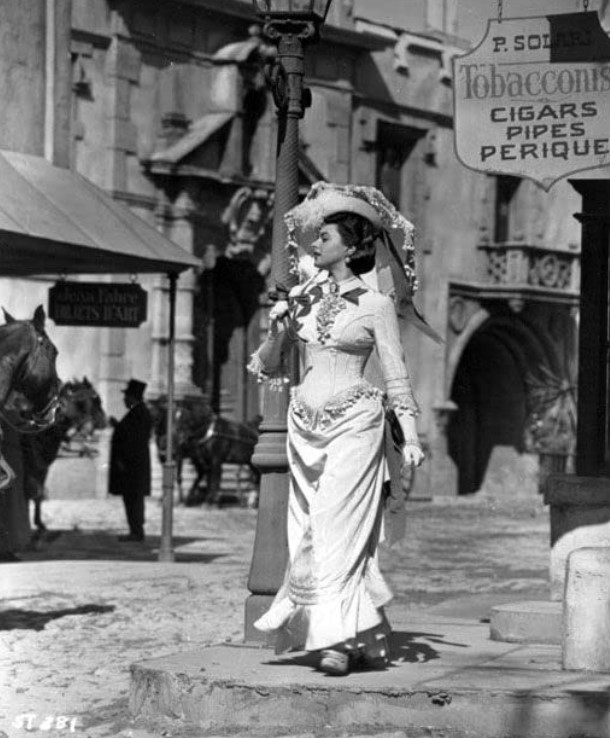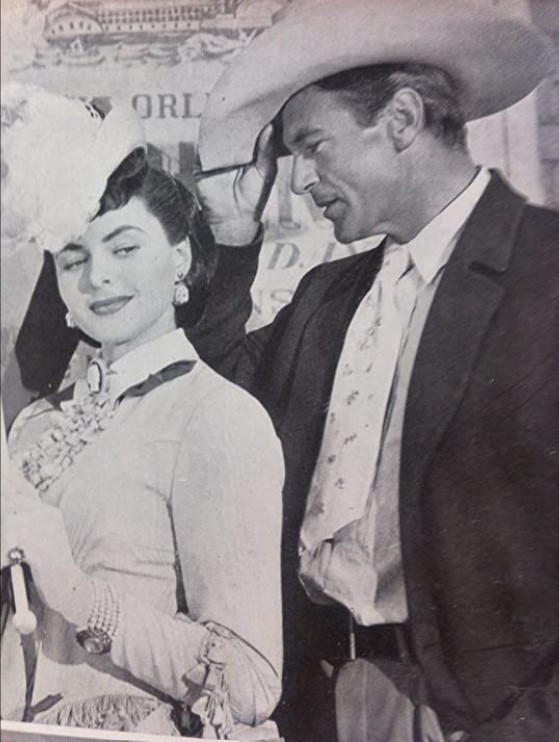

For years, Edna Ferber tried to convinced George Kaufman to write a play with her about:
“Two impecunious rascals, a man and a woman, both bearing a grudge against the world. Meeting by accident. Combining forces, without sentiment, without love, without marriage, to fight and defeat a horde of moneyed rascals in a ruthless world against a ruthless background. Saratoga.”
-Edna Ferber, A Peculiar Treasure
But Kaufman had no interest in the play, and Ferber shelved the idea, for two main reasons: (1) she didn’t want to write a play alone, and (2) though she knew the man in her story would be a Texan, she couldn’t quite get a mental image of the woman.
She was in Texas researching a novel that was going nowhere (and would itself be shelved for a dozen years before reemerging as Giant) when her friend and fellow Pulitzer Prize winning novelist Louis Bromfield telegrammed her to meet him in New Orleans. She’d never been to New Orleans before, and after a few days in The Big Easy, she could finally see her heroine clearly in her mind’s eye—Clio Dulaine, beautiful, young, and bold. Paris-raised but returning to the city of her birth to exact revenge.
The resulting novel, Saratoga Trunk, was another critical and commercial success, garnering favorable reviews and was one of the top ten best-selling novels of 1941.
Speculation about who would play the leads in the inevitable film began immediately. Clifton Fadiman wrote in his New Yorker review that Marlene Dietrich and Gary Cooper were shoo-ins for the lead roles.
He was half-right, as Gary Cooper was the choice for Texan Clint Maroon.
But the role of Clio went not to Dietrich, nor Olivia de Havilland*, who desperately wanted it, but to Ingrid Bergman, fresh off filming For Whom the Bell Tolls with Cooper.
The result?
Ferber herself (never afraid to criticize adaptations of her films) called it, “a rather dashing motion picture.”
Dashing indeed.
Like the novel, the film opens with the arrival of Clio Dulaine in New Orleans. Years ago, her mother was the subject of scandal, the kept mistress of the rich and powerful Nicholas Dulaine. Clio’s mother shot him when he left her, though it was an accident as he intervened when she was trying to commit suicide over her heartbreak.

The Dulaine family paid Clio’s mother to go to France and never return.
After her mother’s death, Clio arrives in America determined to first make life very uncomfortable for the Dulaines, and eventually marry a rich man so she can live in comfort.
She will never be a fool for love—that was her mother’s mistake.
Clio, the spitting image of her mother, conspicuously parades around New Orleans, delighting in the attention and ire she draws from the Dulaine family. She also attracts the attention of Texan Clint Maroon, a stranger passing through in a ten gallon white hat and big leather boots.
The attraction is instant, mutual, and all consuming.

But Maroon is exactly the kind of man Clio can’t marry—he’s poor, scraping by on what he wins at the races and poker games. And Maroon isn’t looking to permanently hitch his wagon to a woman who in many ways is still a girl—both cunning and naïve, calculating and occasionally hysterical.
Maroon has his own agenda—he wants revenge against the railroad barons who cheated his parents out of their land.
And yet he can’t bring himself to leave for Saratoga, New York—summer home of the east’s richest railroad barons—until he convinces Clio to go with him.
They’ll work together to achieve their dual aims—he will fleece the men at the poker table, and she’ll snag a rich husband.

She sets her sights on Bartholomew Van Steed, a rich but feckless man tied to his mother’s apron strings. Clio easily charms and manipulates him until he’s on the brink of marriage, driving Clint mad with jealousy.
But she cannot—and will not—marry a man without money.
Van Steed owns what was a mostly worthless railroad line outside of Saratoga. But as the eastern cities build up, the line is poised to become a trunk line—a main artery—and make the owner rich. But Van Steed’s competitors are using dirty tactics to steal the line from him.
He doesn’t know how to fight.
But Clint does.
Shall I spoil the ending for you reader?
Let’s just say that about the time Clio decides that love trumps money, Clint decides that if Clio will only marry a man with money, then he will get truckloads of it.
And he’ll use his wits, his fists, and the Saratoga trunk line to fight for it Texas style.
Saratoga Trunk is my favorite of Edna Ferber’s novels, and the film captures the mystery of New Orleans, the romance in the air, and the irresistible pleasure of watching two rascals fall in love despite their best efforts to prevent it.
*Note: By 1945, Olivia de Havilland was deep into her Hollywood blacklist period after suing Warner Brothers regarding her contract. But “Saratoga Trunk” was filmed in 1943, when de Havilland was still working for Warner Brothers (though about to launch her famous suit.) Though the film was finished in 1943, Warner Brothers didn’t release it until after World War II ended. During that time audiences preferred films about the war.

Sources
- Ferber, Edna. A Peculiar Treasure. 1939.
- Behlmer, Rudy. Inside Warner Bros (1935-1951). 1985.
- Ferber, Edna. Saratoga Trunk. 1969 reprint.
Want more? Click here for an index of all posts in the series, as well as source notes and suggested readings.

Mr.Cooper, so handsome!
Haha I realise that was a shallow response to your wonderful missive, hey~ho, I’m a sucker for a well honed jawline and twinkly eyes. I will be looking into Edna when I’ve finished my lurrent reading pile!
I am not so high-minded that I cannot admit that watching Gary Cooper strut around accounts for at least 50% of the film’s enjoyment for me! Hope you enjoy Ferber when you get to her….
Oddly enough, the costume and props shop in Scotland for film productions is called…Saratoga Trunk…after this movie! Life was tough for men without money in those days, a nice white hat was clearly not enough to swing the deal…
That’s fascinating about the store, especially since the title doesn’t actually refer to a trunk. The movie added a line for Bergman that wasn’t in the novel. When she was talking to one of the rich railroad barons, she said that she thought the Saratoga Trunk was something to put clothes in….she knew better of course, but reeled him right in with her helpless female act.
As I read this, a moe recent film kept coming to mind that echoed what you wrote, as when you said: “He will fleece the men at the poker table, and she’ll snag a rich husband,” and again when you summed things up: “the irresistible pleasure of watching two rascals fall in love despite their best efforts to prevent.” The film? “Maverick” starring Jodie Foster and Mel Gibson.
Another film I love. Maverick has more comedy but definitely the same core storyline Now I want to go back and watch that!